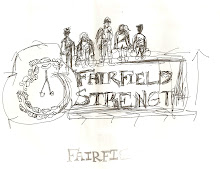Watch, Try, Watch, Practice.
The key to TGU is perfect practice, never to failure.
Do only what you can, but do it perfectly.
Beginners may only be able to do the first movement, slides 1 and 2. From lying flat on back rising to elbow and heel. This is called a 1/4 get up. Do these until you can do them perfectly: up smooth and down under control. Then progress to slide 3, straighten the arm and sit up, then slide 4 - bridge position, then slide 5 - pull the leg through the bridge, then slide 6 tall half kneeling position (also known as the lunge position) Then slide 7 - push through your forward heel and stand up tall, feet together. When learning this movement it is important to "grease the grove" . Perform each aspect of the movement idependently for 2-3 reps, slowly and under control, especially on the negative - pull your body back down to the ground, never fall. Then perform the movement pattern in it's entirety, up and down, smooth, purposeful and under control. Do what you can, perfectly and never to failure. Fatigue or failure forces our body to utilize adaptation to compensate for fatigue - in other words - we teach our body that it is OK to move incorrectly when we are tired. That sets us up for injury. Plan your fatigue so that you always have a few reps in you pocket at the end of your work out. You should feel energized and strong. Do not re-enforce bad movement patterns.
Mission Statement - Fairfield Strength:
To cultivate growth opportunities for children of all ages and abilities, bringing together the learned and the learning, in a spirit of helpfulness and respect, to improve our health and wellness, using fitness and sport as a medium to teach life lessons.
Showing posts with label Turkish Get Up. Show all posts
Showing posts with label Turkish Get Up. Show all posts
Friday, October 10, 2008
Wednesday, October 8, 2008
Turkish Get Up
The Turkish Get Up - the perfect blend of functional movement patterns designed to improve stability, mobility, and strength. If you could do only one excercise for the core, this should be it. Designed to be performed with a kettle bell, it can be performed without weight, or better yet, with a water bottle balanced on your fist. The goal is to stay tight and perform the movement in a smooth fluid manner. Perfect practice, never to failure. Riccarrdi, one of our trainers from last season, demonstrates below. Your homework assigment is to watch the video and practice the movement until you can perform it while balancing a water bottle on your extended first. (both sides ) Remember - keep your eyes on the bell (or the water bottle. ) Captain
Subscribe to:
Posts (Atom)







